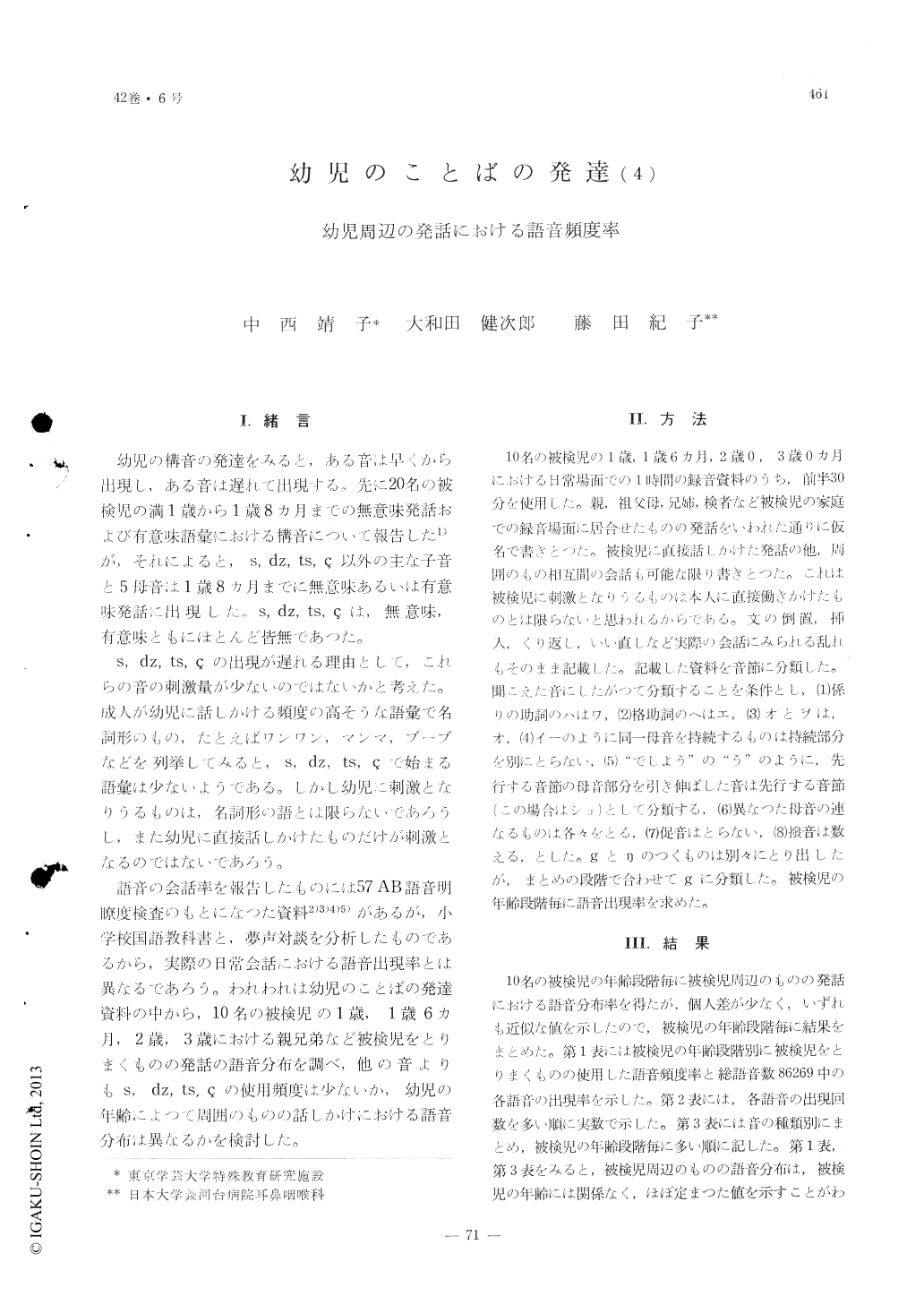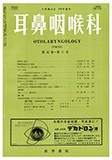Japanese
English
- 有料閲覧
- Abstract 文献概要
- 1ページ目 Look Inside
Ⅰ.緒言
幼児の構音の発達をみると,ある音は早くから出現し,ある音は遅れて出現する。先に20名の被検児の満1歳から1歳8カ月までの無意味発話および有意味語彙における構音について報告した1)が,それによると,s,dz,ts,ç以外の主な子音と5母音は1歳8カ月までに無意味あるいは有意味発話に出現した。s,dz,ts,çは,無意味,有意味ともにほとんど皆無であつた。
s,dz,ts, çの出現が遅れる理由として,これらの音の刺激量が少ないのではないかと考えた。成人が幼児に話しかける頻度の高そうな語彙で名詞形のもの,たとえばワンワン,マンマ,ブーブなどを列挙してみると,s,dz,ts,çで始まる語彙は少ないようである。しかし幼児に刺激となりうるものは,名詞形の語とは限らないであろうし,また幼児に直接話しかけたものだけが刺激となるのではないであろう。
The frequency of different speech sounds that may occur in ordinary adult conversation around or with children that the latter may imitate is studied. Such an influence was obtained as a taperecorded data from 10 children whose ages ranged from one, one and a half, two and three. The study, also, included whether or not the adult utterances are modified according to the child's age, any relation existed between frequency of particular speech sound and the developmental process of articulation in children, especially the delayed development of s, dz, ts and ç sounds.
The result showed that the frequency of speech sound occurring in adult utterances was relatively stable without any significant modification adjusted towards the child's age. The sounds dz, ts and ç were among the least frequent in an ordinary conversation and it is possible that the children recieve very little of such a stimulus in their early developmental stage. However, the sound s occurred frequently ; no suggestion was obtainable for the explanation of delayed aquirement of this sound in children.

Copyright © 1970, Igaku-Shoin Ltd. All rights reserved.


